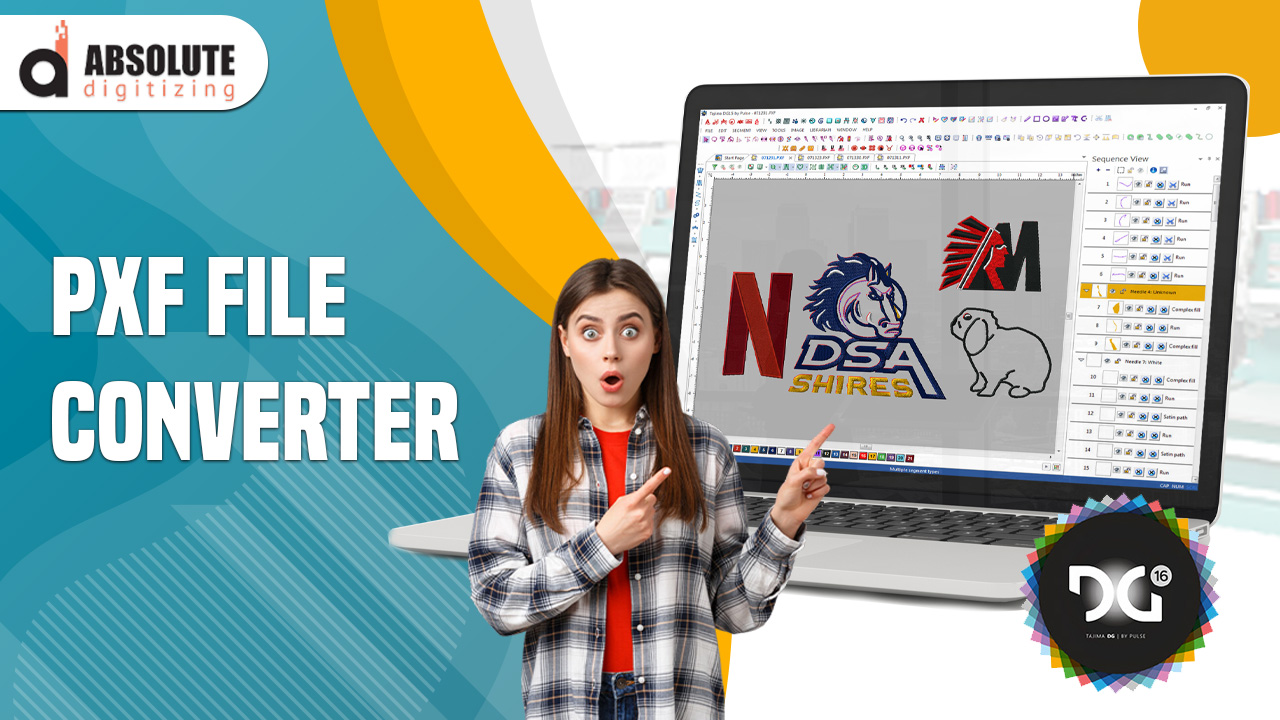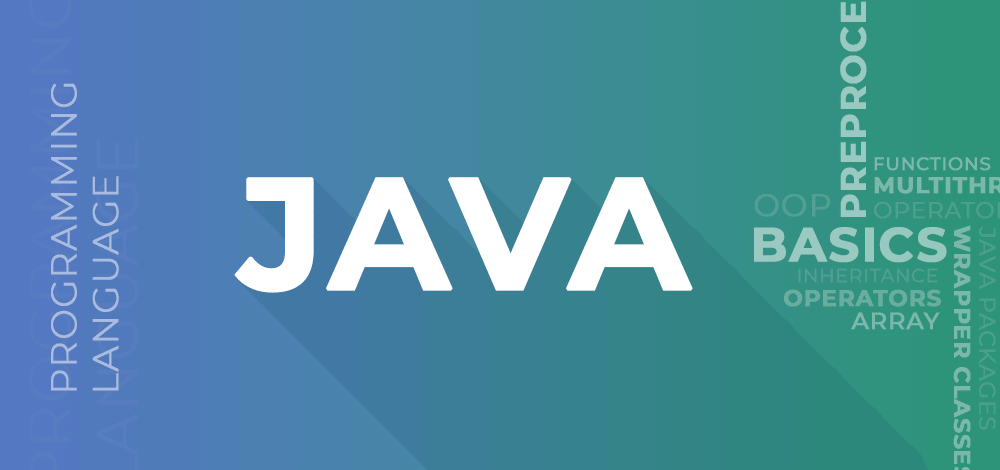Embroidery enthusiasts and businesses alike often find themselves needing to convert an image into a PXF file. PXF is a proprietary embroidery file format primarily used in Pulse embroidery software, known for retaining stitch data, color information, and object-based properties. If you’re looking to transform your design into a PXF file embroidery, you may be wondering about the best method—whether to do it yourself or hire a professional embroidery digitizing service.
In this blog, we’ll walk you through everything you need to know about converting an image to PXF format, from DIY software options to professional services. We’ll also uncover the hidden risks of free online converters, the limitations of auto digitizing, and why hiring a professional digitizer is often the best choice.
What is a PXF File, and Why Do You Need It?
PXF (Pulse Embroidery File) is a format used in Tajima Pulse software for embroidery digitizing. Unlike basic embroidery file formats like DST or PES, which only contain stitch data, PXF files store additional information such as:
- Color sequencing
- Object-based embroidery elements
- Stitch settings and parameters
- Original artwork and vector data
This makes PXF files extremely valuable for professional embroidery businesses since they provide full control over editing and refining designs.
How to Convert an Image to PXF Format
If you have a logo, artwork, or any image you need to convert to PXF, there are two main ways to do it:
1. Using Embroidery Digitizing Software
If you decide to digitize an image yourself, you’ll need professional embroidery digitizing software that supports PXF format. Some popular options include:
- Tajima Pulse (DG16) – The only software that natively creates PXF files.
- Wilcom Embroidery Studio – While powerful, Wilcom saves files in its own EMB format, not PXF.
- Hatch Embroidery – Great for beginners but does not support PXF.
The Cost of Embroidery Digitizing Software
Before diving into digitizing yourself, consider the cost:
- Tajima Pulse DG16: Starts at $2,500+ for a basic version, with higher versions costing over $5,000.
- Wilcom Embroidery Studio E4: Ranges from $2,000 to $5,000.
- Hatch Embroidery: Around $1,200 for advanced features.
These high costs make it impractical for occasional users who just need a PXF file converted.
The Time Required to Learn Digitizing
Embroidery digitizing is not as simple as clicking a button. Learning how to properly digitize an image can take months or even years to master. Even if you dedicate several hours daily, expect to spend at least 3 to 6 months before you can produce high-quality embroidery files. If you only need a few designs converted, the time and cost investment in software simply don’t make sense.
2. Hiring an Embroidery Digitizing Service
The best way to convert an image to PXF format is to hire a professional digitizing service. This method saves you time, money, and frustration.
Why Choose a Digitizing Service?
- Affordable: Professional digitizing services, like ours, convert images to PXF format for as low as $10 per design.
- Quick Turnaround: Get your file in as little as 2 to 12 hours, compared to spending days learning software.
- High-Quality Output: Expert digitizers ensure smooth stitches, accurate color mapping, and optimized embroidery files.
For businesses, hiring a digitizer means you can focus on production and sales rather than wasting hours learning software.
The Drawbacks of Auto Digitizing
Many embroidery software programs advertise auto digitizing as a quick way to convert images into embroidery files. While it may sound appealing, auto digitizing has several major drawbacks:
- Lack of Precision: Auto digitizing does not correctly interpret fine details, resulting in messy stitches and inconsistent patterns.
- Excessive Jump Stitches: Without manual refinement, auto-digitized designs often have unnecessary jumps and trims, making them inefficient for embroidery machines.
- Improper Stitch Directions: Proper embroidery requires setting stitch angles to create smooth shading and texture. Auto digitizing cannot optimize stitch angles as well as a human digitizer can.
- Limited Customization: Advanced techniques like underlay settings, density control, and stitch compensation require manual adjustments that auto digitizing cannot achieve.
- Not Suitable for Complex Designs: If your image has intricate details, shading, or small text, auto digitizing will likely distort these elements, producing an unusable file.
If you want professional-quality embroidery, auto digitizing is not the solution. Manual digitizing by an expert is the only way to ensure superior stitch quality.
Additional Factors to Consider Before Choosing a Digitizing Method
1. Embroidery Machine Compatibility
Not all embroidery machines accept the same file formats. PXF is primarily used with Pulse software, which integrates well with Tajima embroidery machines. If your embroidery machine uses a different format like PES, DST, or EXP, you may need additional software or a conversion process to use the PXF file.
2. Quality vs. Cost Trade-Off
While free digitizing software and auto digitizing tools may seem cost-effective, they often lead to poor stitch quality, which results in wasted fabric, thread, and time. A properly digitized file ensures smooth embroidery, reducing production errors and improving overall efficiency.
3. Scalability for Business Growth
If you are running an embroidery business, outsourcing digitizing can help scale your operations. Instead of spending hours on digitizing, you can focus on expanding your customer base, improving production speed, and increasing sales.
Beware of Free Embroidery Digitizing Software
You may come across free embroidery digitizing software, but they have significant drawbacks:
- Ink/Stitch (Free Extension for Inkscape): Open-source but lacks advanced features needed for high-quality digitizing.
- SophieSew: Free but outdated, with limited stitch control.
- Embroidermodder: Good for minor edits but lacks full digitizing capability.
These free programs often lack PXF export capability and do not provide the precision needed for commercial embroidery. If you’re serious about quality, these free tools won’t be reliable.
The Scam of Free Online Converters
Some websites claim to offer free online image-to-PXF converters, but most of these are scams. Here’s how they trick users:
- They infect your computer with malware: Many of these sites ask you to upload an image, then download a suspicious file, which could be a virus or ransomware.
- They earn money from ads: These sites bombard users with excessive ads and fake download buttons but do not actually generate a PXF file.
- They only convert to common formats: Some free tools convert images to PNG, JPG, or at best, a basic DST file—not a real, editable PXF file.
Never trust websites that claim to instantly convert an image to PXF for free—they simply do not work.
Final Thoughts
If you need to convert an image to PXF format, you have two choices: spend thousands of dollars and months learning digitizing software, or hire an expert for just $10 per design.
For those who need high-quality embroidery files without the headache, professional digitizing services are the best solution. Let us handle your digitizing needs so you can focus on your embroidery business!
By choosing professional digitizing, you are ensuring the best quality for your embroidery projects. The right digitized file can make a huge difference in how your design translates onto fabric. Poorly digitized designs can lead to wasted materials, longer machine run times, and disappointing results. With our affordable services, you no longer need to worry about learning complicated software or dealing with low-quality digitizing. Our experts provide meticulously crafted designs that are ready for embroidery without any hassle.
Investing in professional digitizing is a smart choice, especially for businesses looking to maintain high production standards. A well-digitized design ensures consistent embroidery across multiple pieces, which is crucial for branding, uniforms, and large production runs. Don’t take chances with auto digitizing or free online tools—trust professionals who understand the nuances of embroidery.


